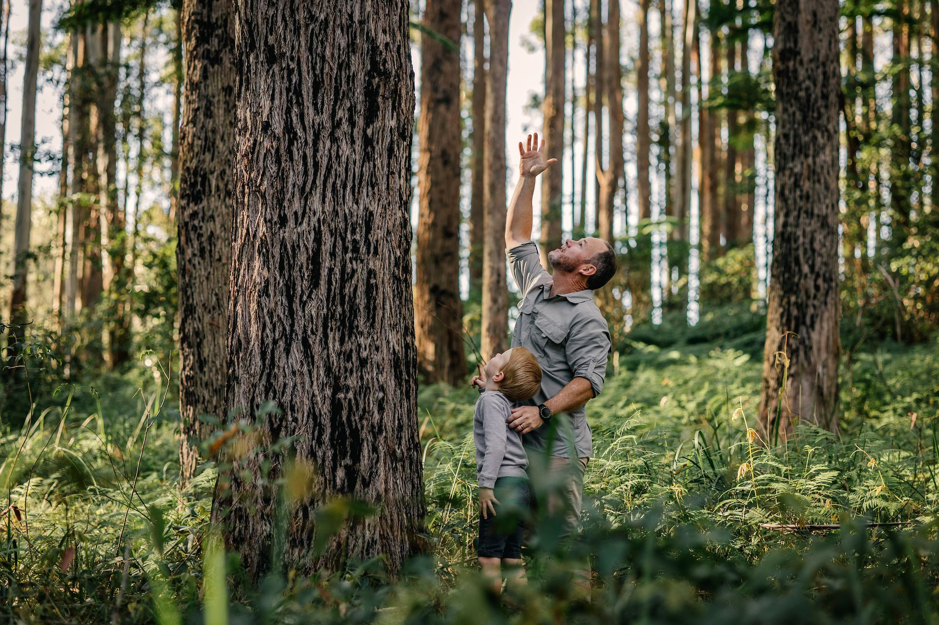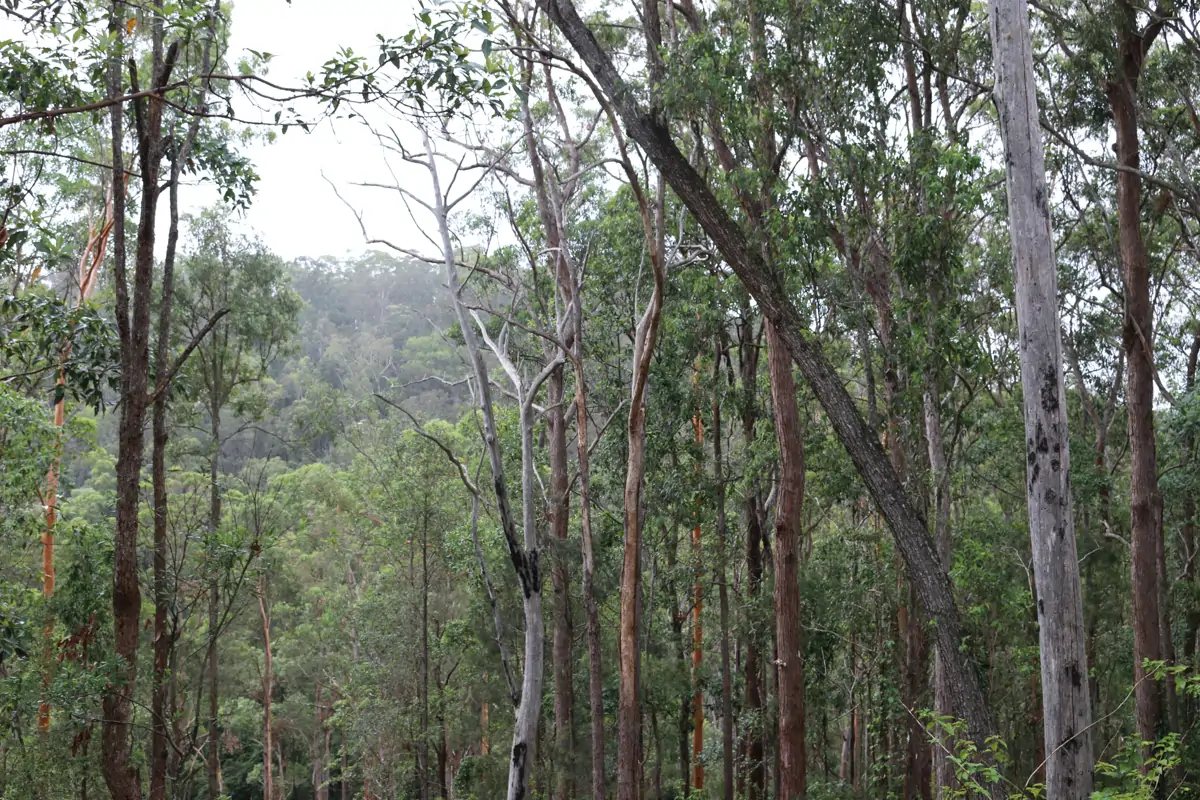Did you know there are approximately 73,000 species of trees in the world? It was only in February 2022 that scientists calculated this number.
In Australia, there are over 24,000 species of native trees and plants. With 2,800 species of Eucalypt (gum trees) alone, it can be difficult to tell them apart (Australia).
This guide highlights the eight most commonly found Eucalyptus trees in Northern NSW Coastal and Tableland forests.
So how can you identify Australian native trees?
- Firstly consider the size and shape of the tree. How tall is it? Does it have a dense crown? Are there multiple trunks?
- Next, the colour and type of bark on the trunk. Is it rough or smooth? Is the bark stripping? Is another colour revealed?
- Thirdly, the type, shape, and colour of the leaf and any accompanying flowering and fruit. What time of year is it?
- Lastly, where is it located? Is it on dry or wet ground? Is it high in the forest or in a valley? What are the other types of trees around?
How to spot a Eucalypt tree
The best way to identify a eucalypt is to look around the tree base for the woody capsule (fruit). Each species has a fruit that has its own unique shape and features (Forestry Corporation). Bark and canopy (crown) are also characteristics you can utilise in the identification exercise.
Our NSW Eucalyptus Native Tree Guide below has been compiled from a range of sources, including Forestry Corporation, NedLandCare, Royal Botanic Garden Sydney, and of course, our own expertise.
Coastal Blackbutt, also known as Eucalyptus Pilularis.
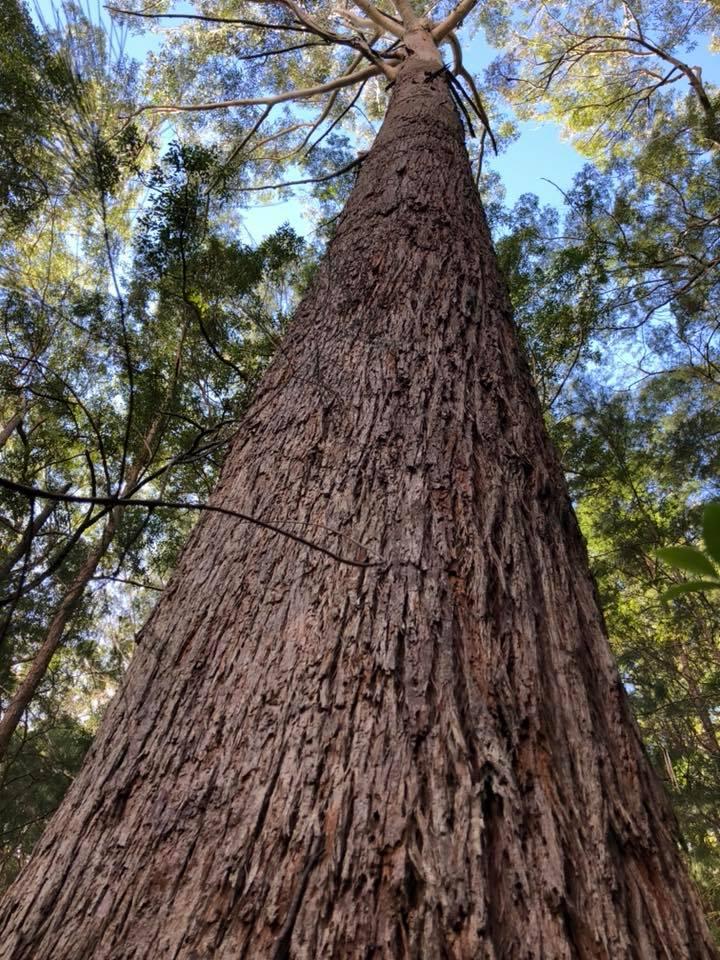
Blackbutt is one of the highest value timbers growing abundantly in Northern NSW. A tall tree of up to 40 metres or more in height features a long straight cylindrical trunk, which can reach up to 3 metres in diameter.
Blackbutt gets its name from the rough bark at the tree base, which is often charred black from past bush fires. The lower half of Blackbutt native trees features rough, fibrous bark, with the upper trunk and branches most commonly being smooth and whitish to yellow in colour. As the bark sheds away in strips in the upper part of the trunk, it often reveals smooth branches with visible insect ‘scribbles’ on the bark. Blackbutt is renowned for both its strength and versatility of application.
Spotted Gum, also known as Corymbia Maculata.
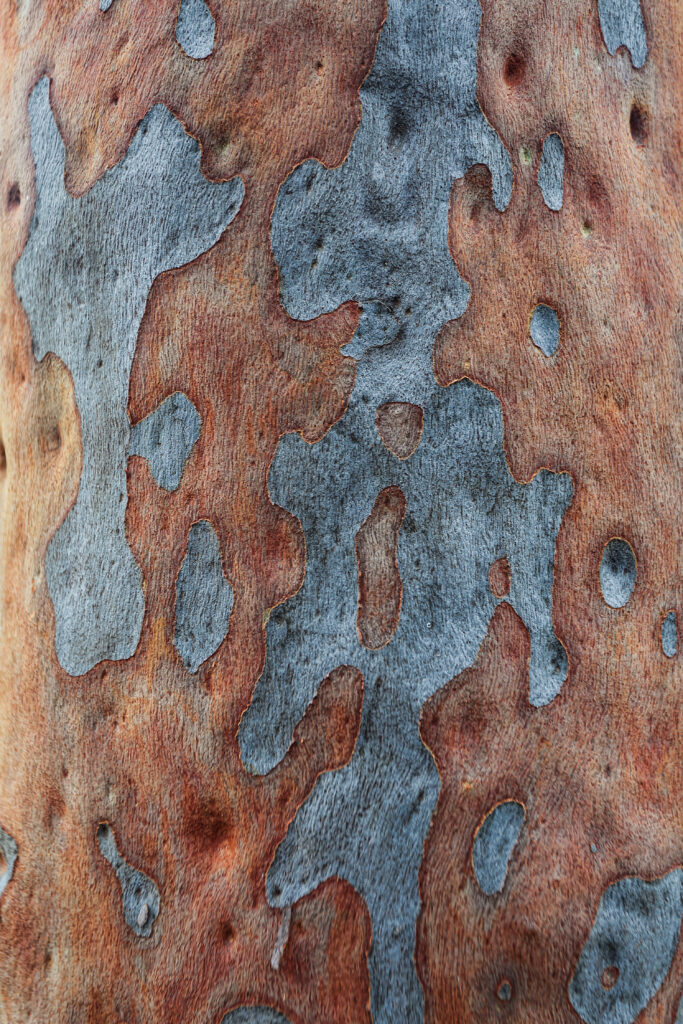
The Spotted Gum is a tall, straight tree that can reach heights of up to 50 metres and a diameter of up to 1.4 metres. These native tree species are easily recognised by their smooth, dimpled bark, which is shed in summer, leaving a trunk that is mottled cream and grey ‘spotted’ appearance. The spotted gum tree features dark, dull green leaves and large woody gum nuts, which are almost round—often confused with the Rusty Gum, which has lighter coloured foliage.
Spotted Gum features a striking grain structure and vibrant colour, and these native trees are highly sought after by architects and designers worldwide.
Tallowwood, also known as Eucalyptus Microcorys.
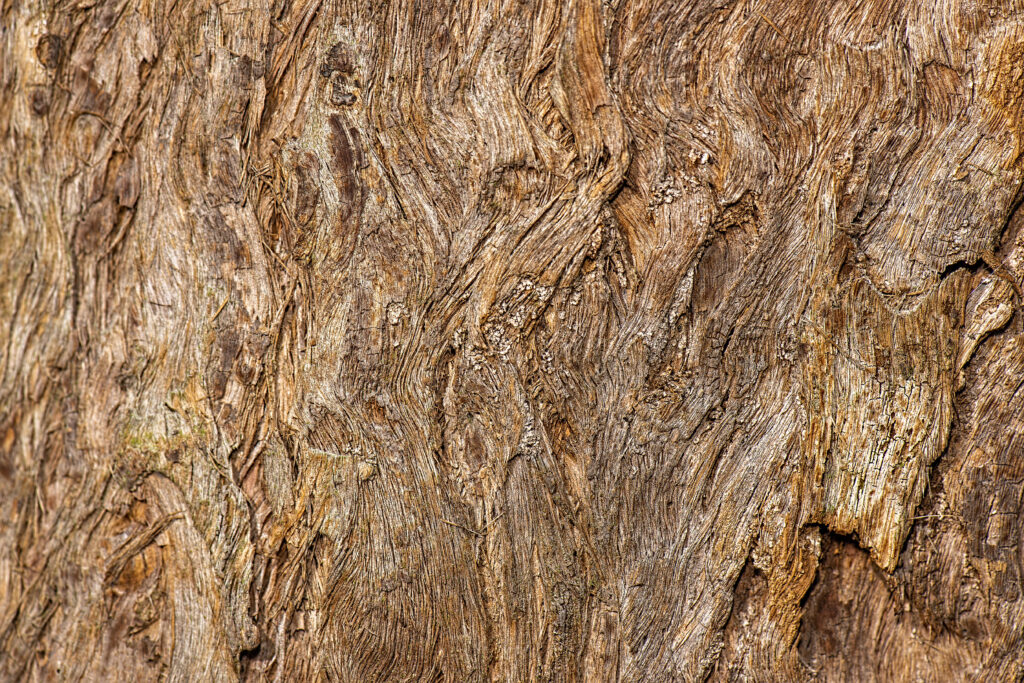
Tallowwood is a large tree that can grow up to 50 metres (though commonly up to 30 metres), with a dense crown of small leaves that taper to a sharp point and are visibly paler on their underside.
The trunks of Tallowwood trees have a distinctive luster and greasy appearance, featuring brown to orange stringybark that can be pulled away in long strips. When flowering, it has white to yellow flowers and conical fruit. These trees are most often found growing in tall open forests on slopes, ridges, and valleys. Golden honey in color, with interlocking grain, Tallowood is a highly prized building timber.
Grey Ironbark, also known as Eucalyptus Paniculata.
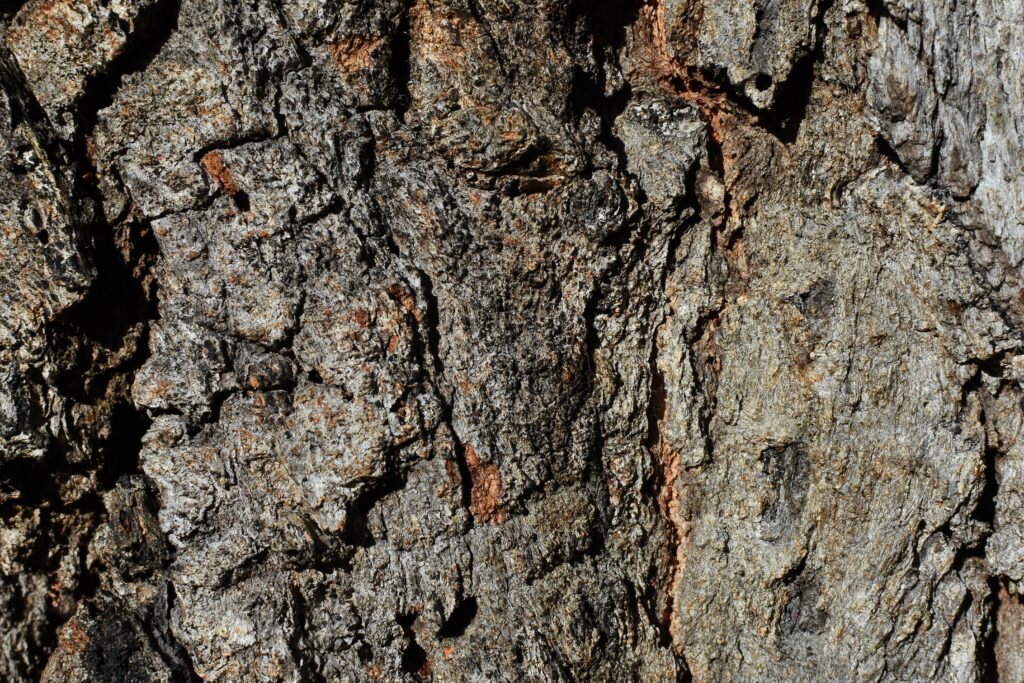
Ironbark typically grows in dry, hilly inland areas, often alongside spotted or red gums, and commonly reaches up to 30 metres in height. It features thick, hard, deeply furrowed dark grey bark with a dull, often greyish crown of drooping leaves. It produces distinctively small fruits and narrow leaves.
A premium, hard, and durable timber, it is used both as internal and external construction timber, including use as railway sleepers, structural house frames, and sporting goods.
White Mahogany, also known as Eucalyptus Acmenoides.
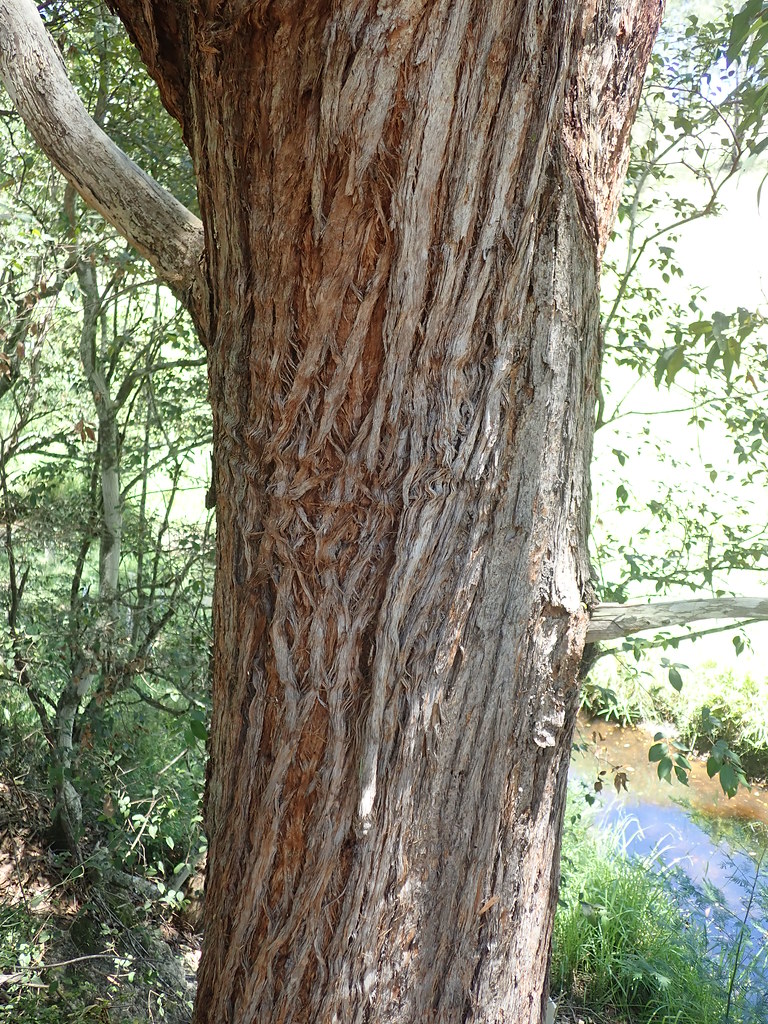
Photo: © Eucalyptus Acmenoides by Harry Rose
White Mahogany is a large tree that grows up to 30-50 metres in height, with thick grey, closely packed bark that can easily be pulled away in long strips. Leaves are blueish-green and curved, gradually narrowing to a pointed tip. These trees are summer flowering, producing distinctive hemispherical capsules, and are most commonly found in wet woodland environments.
This is a highly regarded quality timber, somewhat similar to Tallowwood, although not as greasy. As it is resistant to termites, it’s often used for heavy engineering and bridge construction but can also be used for fencing and flooring.
Grey Gum, also known as Eucalyptus Propinqua.
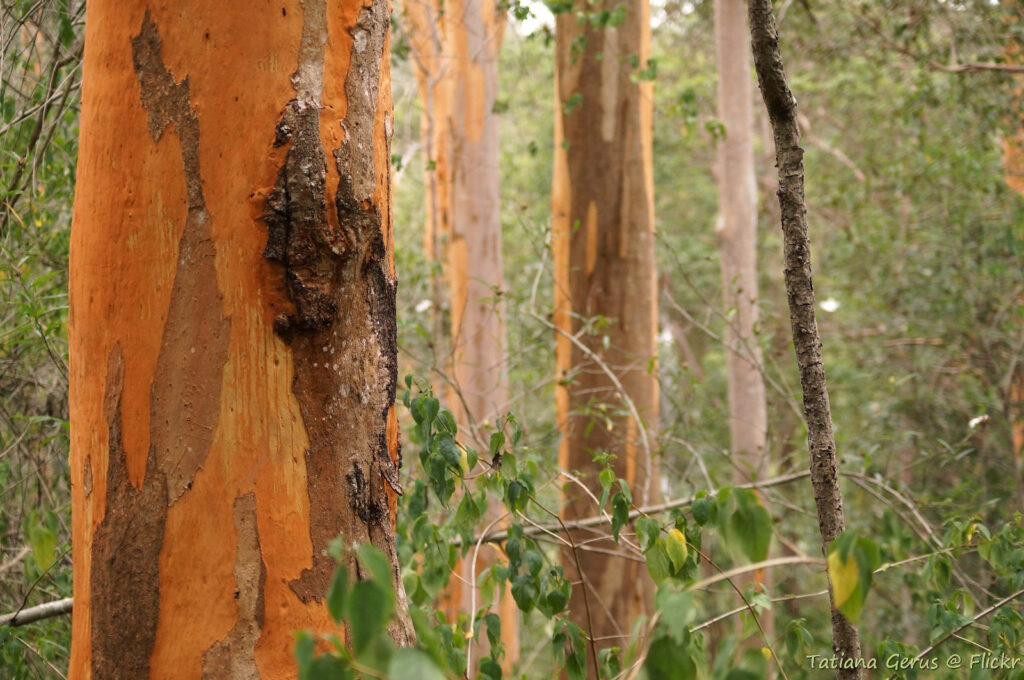
Photo: © Eucalyptus Propinqua by Tatters
Growing up to 30 metres in height, the Grey Gum features a straight trunk and a moderately small open crown, with long leathery leaves that taper to a point. Smooth matt textured bark sheds in large irregular patches exposing fresh orange or salmon-coloured bark, which weathers over time to a dull grey.
Producing medium-sized gum nuts, this species is usually found in the low undulating country, preferring slopes to valleys.
Highly classical ruby red timber and a cathedral grain pattern set this timber apart. Among the hardest timbers in the world, the Grey Gum is well suited for flooring.
Grey Box, also known as Eucalyptus Microcarpa.
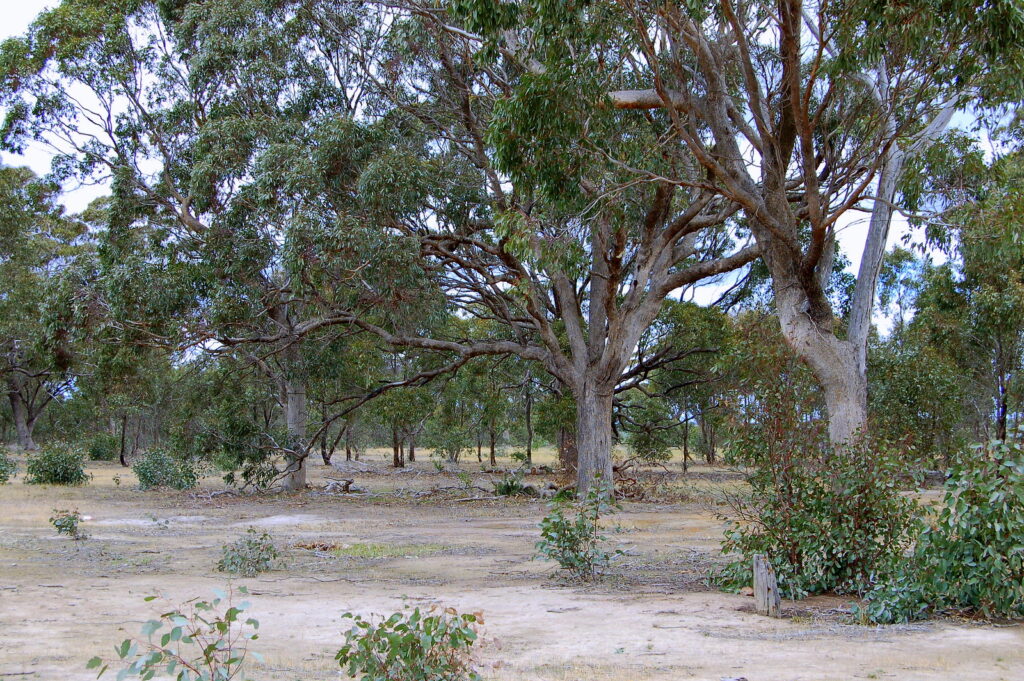
Photo: © Eucalyptus Microcarpa by Elizabeth Donoghue
Grey Box are medium-sized trees commonly 15-25 metres in height, sometimes with several trunks. Found in heavier soils, they feature box-type bark on the trunk and larger branches, with smooth grey upper branches and white/grey leaves. Flowering takes place in Autumn, producing white flowers and woody barrel-shaped capsules.
This species is perfect for timber flooring, with colours ranging from warm honey to soft wheat tones and a tight cathedral grain pattern.
Sydney Blue Gum, also known as Eucalyptus Saligna.
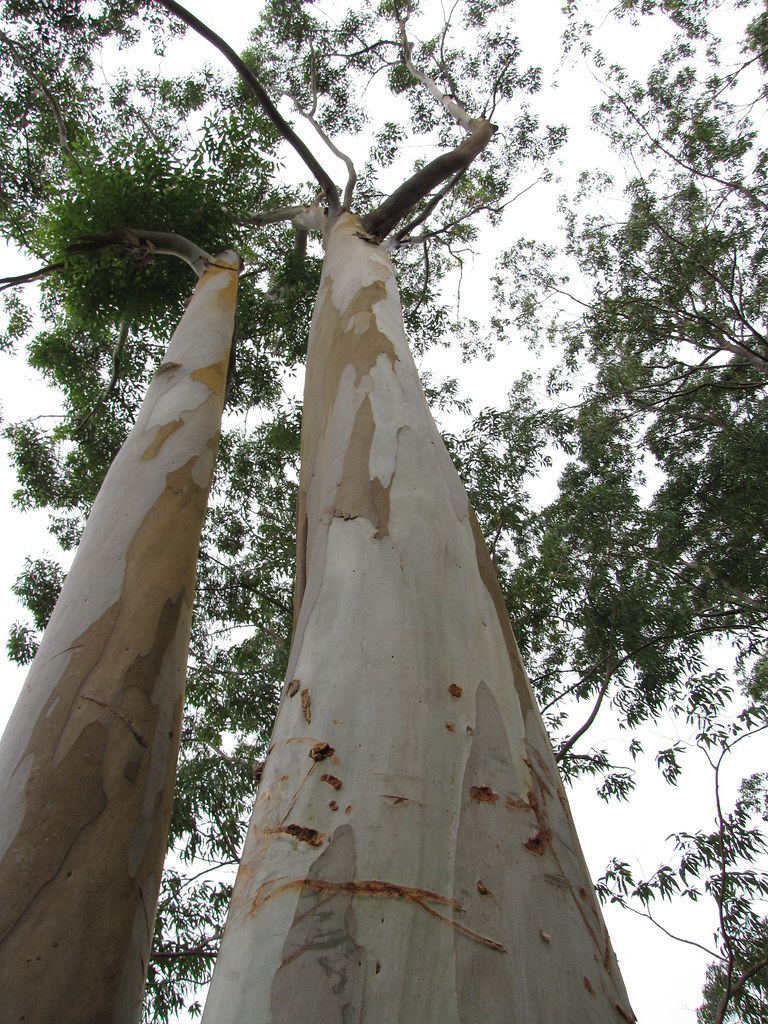
Photo: © Eucalyptus Saligna by Forest & Kim Starr
A large tree that often reaches heights of 40 metres, the Sydney Blue Gum features a distinctive blueish tinge to its smooth, almost shining bark. The bark sheds in long strips, revealing a white to blue-grey powdered surface and rough bark remaining at the base. Named after its predominant location of Sydney and the Blue Mountains, it is also found along the rest of the NSW coast.
The leaves alternate along the branch, with medium-sized gumnuts that expose outwardly pointing teeth. The canopy is usually quite open, and lower branches do not persist.
A relatively straight-grained timber with visible gum veins, it is commonly used in flooring, furniture, and paneling, due to its rich reddish-brown colour.
Need help identifying the trees in your private native forest?
We are here to help. With several decades of experience in private forest management, we know a thing or two about the trees you’ll find on your property. We can help you identify your tree types, health, and forestry potential as part of our no-obligation-free forest assessment.
We’d love to hear from you.
Sustainable Forest Management operates along the East Coast, with a core focus on Northern NSW and SE QLD.
Get in touch today for a no obligations appraisal of your private native forest.
